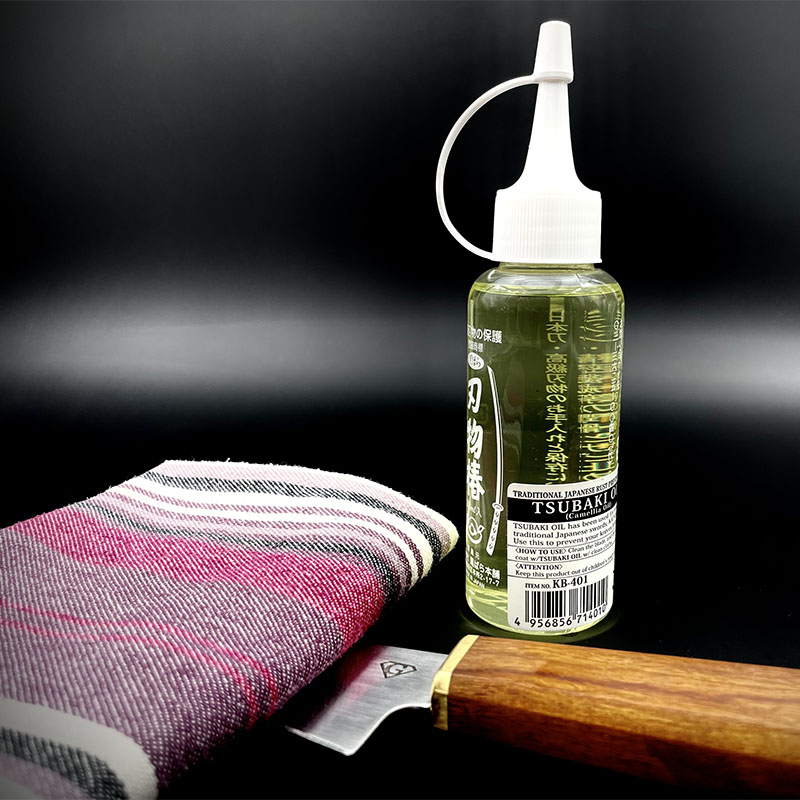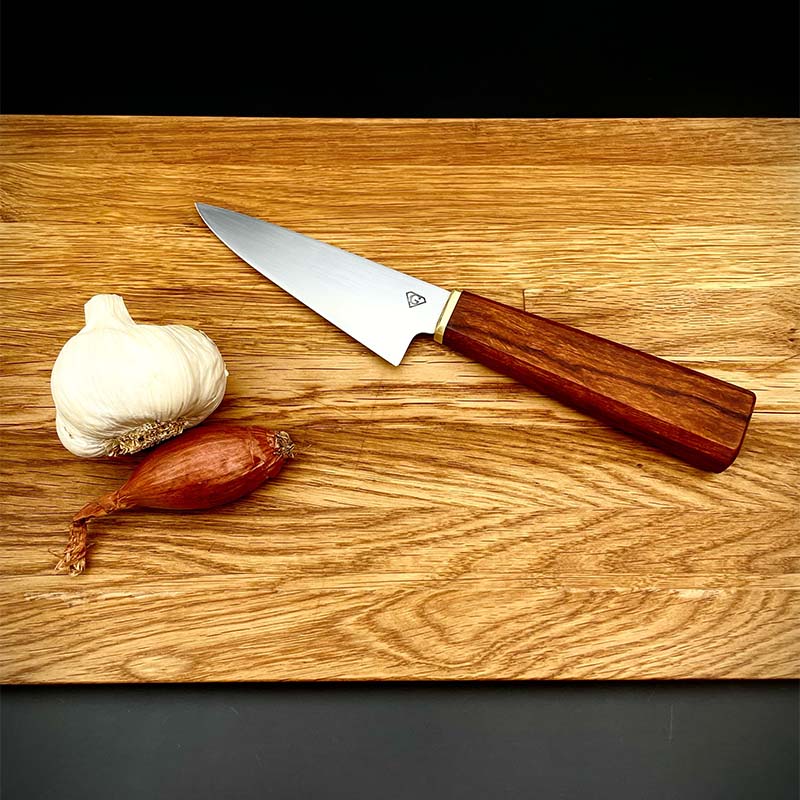Care guide
Handmade knives require particular care. You will find on this page use and care instructions for your knives. You can download a printable pdf version by clicking on the icon.

Download PDF version
NEVER PUT KNIFES IN A DISHWASHER.
Detergents, prolonged contact in hot water, shocks can damage the wooden handle and the blade.
CLEAN, WIPE AND DRY KNIVES WELL, IMMEDIATELY AFTER USE.
Do not leave the knives in prolonged contact with water or juices, especially with acidic foods, do not leave to soak. Do not use an abrasive sponge.
Knives with non-stainless high carbon steel blades are subject to oxidation. Rust can form very quickly if water/moisture or juice is left on the blade.
When in contact with food, carbon steel will patina (darken) and can stain, which is normal and harmless.
Natural wood handles are sensitive to moisture. They are delivered oiled in order to protect them, but it is necessary to oil them periodically in order to maintain this protection and nourish the wood.
With extreme variations in temperature and humidity, natural wood can expand or contract slightly. Wood is a natural material that lives and can change color over time.
If the knife is not used regularly, or to maintain and protect the natural wooden handle or a carbon steel blade, apply a little bit of oil suitable for food contact with a soft cloth or paper towel (ideally camellia oil, or paraffin, in the absence of such oil you can use cooking oil, but the latter can go rancid over time).


To preserve the cutting edge, always cut on a wooden board (avoid bamboo rich in hard silica mineral) or plastic, but never on a hard surface such as metal, glass, or stone.
Kitchen knives such as chef knife, petty, slicer, nakiri or paring knife are intended for slicing, mincing, cutting meat proteins, fish, vegetables, fruits, but not for cutting or breaking bones or any other hard materials (instead use a meat cleaver for this purpose) nor for cutting frozen foods (instead use a specific serrated knife for this purpose), and even less for opening tin cans or be used as a screwdriver.
Be careful not to pry on the blade, either on the tip or on the cutting edge.
Indeed, the geometry of the blade, the cutting edge, and the heat treatment applied are designed to provide a fine and durable cutting edge that promotes cutting, but not for the abuse that would be reserved to a camp or survival knife.
If you are using the blade to gather cut food, use the spine of the blade rather than the cutting edge.
When storing knives, prefer magnetic wall holders or if you store your knives in a drawer, protect the blade with a blade guard.
Sharpening with water stone, or water grinding wheel.
Grit 1000, 3000 (then finer if you want a mirror polished edge, for example to slice delicate protein) and switch to leather strop.
It takes a bit of learning (ideally on cheap blades at first) but then it's a real pleasure to sharpen your blades and keep a perfect edge.
Honing rods allow you to straighten the cutting edge of the blade and get it to cut again but do not allow to sharpen a blade. They are designed for soft or medium hard steels but should be avoided on hard steels.

